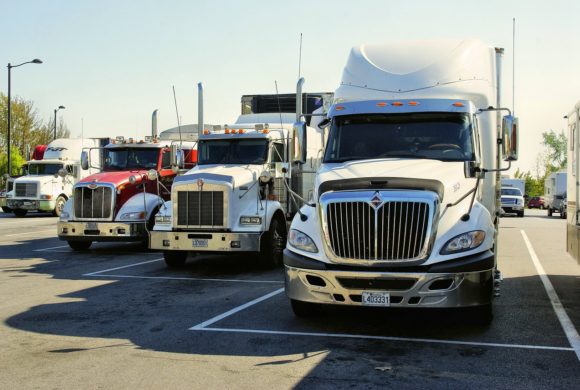
by Queener Law | Jun 18, 2018 | Auto Accident, Colorado, Kentucky, Tennessee
Tesla Crashed While on Autopilot
A recent crash in Utah has raised concerns that drivers may be inattentive when they are using autopilot, failing to react and take control when doing so is needed. When the woman crashed into a stopped firetruck while she was traveling at 60 mph in her Tesla with the autopilot system engaged, her hands had not been on the wheel for about 80 seconds. She was ticketed after telling the police that she was looking at her phone just before the collision.
A 28-year-old Utah woman was driving her Tesla Model S on autopilot, which requires driver oversight. She took her hands off of the wheel to look at her cell phone while she was traveling at 60 mph. While she was looking at her phone, her car crashed into a fire truck that had stopped. She only suffered a broken foot in the collision, and Tesla placed blame on her for her accident. The woman reportedly did not have her hands on the wheel for the 80 seconds that led up to the accident. The crash was not the first one involving a Tesla while it was on autopilot. The National Highway Traffic Safety Administration is currently investigating collisions of Tesla cars in California and Florida.
Problems Revealed by the Crash
The latest car crash occurred amidst the rush of car manufacturers to add driverless technology to their vehicles. Carmakers tout the technology, claiming that it is much safer than human drivers and should lead to a drop in accidents. One issue that was revealed by this accident is that drivers may become complacent when they are driving on autopilot and fail to pay attention to what is happening on the road around them. In the woman’s case, data from her car revealed that she had taken her hands off of the wheel more than 12 times. The woman only placed her hands back on the wheel for a few seconds when the car prompted her to do so on its heads-up display. Tesla does not have the technology to track when motorists are not paying attention like other carmakers do in their autonomous vehicles.

by Queener Law | Apr 11, 2018 | Auto Accident, Colorado, Kentucky, Tennessee
Infotainment systems that use single-voice commands help older drivers keep their attention focused on the roads much better than multi-step systems or manipulating knobs on the dashboard. Single-step voice command systems help drivers by reducing the amount of visual distraction. With multi-step voice command systems, researchers have found that as age increases, the systems become more distracting to the drivers. However, they found that single-command systems do not show a correlation between age and increased distraction.
Single-Command Voice Systems Safer
According to the Insurance Institute for Highway Safety, voice command systems are less distracting for drivers than infotainment systems that require people to glance at them or manually manipulate them. Researchers evaluated the effects that the characteristics of various interfaces had on drivers’ ability to focus and determined that those that used single-step voice commands impacted driver focus less than those that required multiple-step commands.
The researchers studied 80 drivers on Boston-area interstates between the ages of 20 and 66 while they made phone calls. Half of the drivers drove vehicles that were equipped with single-command systems while the other half drove vehicles that were equipped with multiple-step command systems. After the drivers were trained on how to use the infotainment systems, cameras were used to analyze the effects of using the systems.
The researchers found that for each 10-year increase in age, 3.7 more seconds were required for drivers to complete their calls with the multiple-step systems. Long glances away from the road lasting two seconds or more also increased by 0.4 percentage points. In the single-voice command vehicles, there was no corresponding increase in distraction with increasing age. Regardless of how old they were, the drivers that used single-voice command systems were able to keep their eyes on the road 85 percent of the time while they were making phone calls.
The findings indicate that installing single-voice command systems in vehicles that are owned by older drivers may help them to keep their attention focused on the roads. These systems may help older drivers avoid accidents that are caused by distracted driving.

by Queener Law | Mar 5, 2018 | Auto Accident, Colorado, Kentucky, Tennessee
When motorists are driving dangerously because they are drunk, distracted or aggressive, these dangerous drivers should be reported to authorities right away. People who witness reckless drivers should maintain a safe distance from motorists who are driving dangerously. They should have a passenger call 9-1-1, or pull over to call the police themselves as soon as it is safe. Reporting dangerous drivers can help prevent accidents that could result in severe injuries or fatalities.
What to Do When There Is a Dangerous Driver
Calling the police is the best defense against dangerous drivers. When people see drivers who are weaving in and out of traffic, driving aggressively or driving while distracted or appear to be drunk, they should not attempt to follow the dangerous motorist. Doing so could make the situation worse. People should not take pictures of dangerous drivers or provoke them in any way because such actions could lead to road rage incidents. Instead, they should pull over to the side of the road and call the police. If possible, people should try to note the vehicle’s make, model, color, and license plate number. This information can be helpful for responding officers who are attempting to locate the vehicle. Witnesses should also take note of the approximate mile marker or other location indicators and the direction the dangerous vehicle is traveling so they can provide this information to the dispatcher.
People should only report those drivers whose actions are a threat to public safety. The 911 system should not be used to report simple traffic violations. When people witness problematic driving behaviors that are minor and that do not rise to the level of endangering others, they can opt to report what they see by calling the police non-emergency line.
Why Reporting Is Important
While some people may be hesitant to report dangerous drivers to the police, it is important to do so. In 2015, more than 3,400 people were killed and 390,000 were injured because of distracted drivers. During the same year, more than 10,265 fatalities and 290,000 injuries were caused by impaired drivers. If reports had been made, some of those accidents could have been prevented.

by Queener Law | Feb 23, 2018 | Colorado, Kentucky, Pedestrian Accident, Tennessee
Many auto manufacturers are taking steps to redesign their vehicles to prevent or minimize pedestrian accidents and the injuries and deaths that result. New features like softer bumpers, modified front-ends, and pedestrian detection and avoidance systems help prevent pedestrian crashes and reduce the risk for traumatic brain injuries and limb injuries, the two most common types of pedestrian injuries involved in vehicle accidents.
How Pedestrian Accidents Occur
Most pedestrian accidents occur when a passenger vehicle is traveling forward while a pedestrian is standing or walking in front of the vehicle. Typically, the pedestrian is hit twice; first by the vehicle and then by the ground. Life-threatening injuries like traumatic brain injury often result because of impact to the windshield or hood of the vehicle. Many other accidents frequently involve disabling injuries to the lower limbs.
Changing Design to Reduce Pedestrian Injuries
Recognizing the potentially catastrophic consequences of a pedestrian accident, some auto manufacturers have begun to change vehicle design to minimize the impact of a vehicle collision.
Head Protection
Many head injuries occur when there is not enough clearance between the vehicle’s hood and its underlying engine components. A gap of about 10 centimeters is usually enough to decelerate the speed of impact and can help prevent pedestrian death. Due to these factors, some vehicle manufacturers have created additional room under the hood. One way that manufacturers have accomplished this is by implementing deformable mounts or adding airbags that cover the hard portions of the hood. Current technology allows pop-up bonnets that add extra clearance to the engine if the bumper senses a collision. The airbag may also cover the windshield.
Limb Protection
Because most pedestrian limb injuries occur when the leading edge of the hood and bumper come in contact with the pedestrian, auto manufacturers focus on these locations to try to prevent pedestrian injuries. They make the bumper softer and modify the geometry of the car’s front end. Lower set bumpers reduce the likelihood of limb injuries. Creating structures under the bumper can also minimize these injuries.
Impact Prevention Technology
Many vehicles are equipped with technology designed to prevent collisions. Radar and camera-based pedestrian detection systems warn drivers or implement automatic braking when pedestrians enter a vehicle’s path.

by Queener Law | Feb 13, 2018 | Auto Accident, Colorado, Kentucky, Tennessee
In reaction to distracted and inattentive driving, Mazda has patented a new driver assistance technology that would engage drivers to make the driving experience more fun. The idea behind the technology is that drivers may become bored while they drive, leading them to glance away from the road on their mobile devices or other electronics. The system would use cameras and sensors to determine when a driver was becoming inattentive and then actively engage the driver in order to draw his or her attention back to the road. Instead of artificial intelligence taking over the car, it would use things like speakers to amplify the engine noise or suggest alternate routes with curvier roads that would require people to keep their eyes on the road.
Mazda’s Driver Assistance Technology
The driver assistance technology that was recently patented by Mazda would encourage drivers to keep their focus on the roads by making the experience more fun. The technology would use cameras and sensory inputs to analyze when drivers were becoming inattentive or distracted by measuring reaction times and other factors. When the system senses that a driver is becoming inattentive, it will give tips to the driver about how to improve his or her driving skills. It might suggest ways to accelerate or to turn so that the driver has a better experience. The systems may also suggest more scenic routes that have curvy roads. This is because driving on these types of roads naturally forces drivers to pay more attention to what they are doing in order to remain safe. The technology also might be used to make the engine sound louder so they might be encouraged to slow down their vehicles.
The technology that has been patented by Mazda is only at the patent stage, and it is unclear whether the company has any plans to develop it. The system is an innovative way to tamp down driver distraction. Messages telling people not to text and drive have had little effect, so new technology that would focus on other aspects of the driving experience might be helpful to reduce driver distraction while increasing driver engagement.

by Queener Law | Jan 16, 2018 | Colorado, Kentucky, Tennessee, Trucking Accident
Following an increase in truck accident fatalities over the past seven years, survivors and safety advocates are urging the Federal Motor Carrier Safety Administration to finalize multiple safety regulations that have been placed on hold. Truck Safety Coalition members attended the nomination hearing of the new administrator of the FMCSA in Oct. 2017. They wanted to draw attention to the importance of a number of safety regulations in the hope that the FMCSA would finalize the rules and begin enforcing them. However, the anti-regulatory environment makes it less likely that the rules will be finalized in the next few years.
Safety Rules at Issue
Despite the push by lobbyists for another delay, the electronic logging device mandate went into effect on Dec. 18 as scheduled. Trucks must now have electronic logging devices installed that track when the trucks are moving. It is thought that the ELD mandate may prevent truck drivers from falsifying their logbooks to get around hours-of-service rules.
Other regulations have not been finalized or implemented, however. A proposed sleep apnea rule that would have required screening for sleep apnea that is similar to what is required of pilots was withdrawn by the FMCSA. Sleep apnea interferes with sleep patterns, causing people who suffer from the condition to feel fatigued. The sleep apnea rule was meant to reduce drowsy and fatigued driving by truck drivers.
Advocates have also been calling for an enhancement in driver training rules to require more hours behind the wheel. The proposed rule that would have required trucks weighing more than 26,000 pounds to have speed limiting devices installed has also not been finalized. The Trump administration is still considering it, and it is uncertain whether or not it will be enacted.
Truck Accident Increases
Truck accidents have increased over the last seven years. In 2016, there were 4.317 people who were killed in accidents involving large trucks. Many of these accidents were caused by some of the issues that the proposed regulations would address. Despite this, it is unlikely that the FMCSA will act to prioritize safety because of the anti-regulatory push in the administration.






